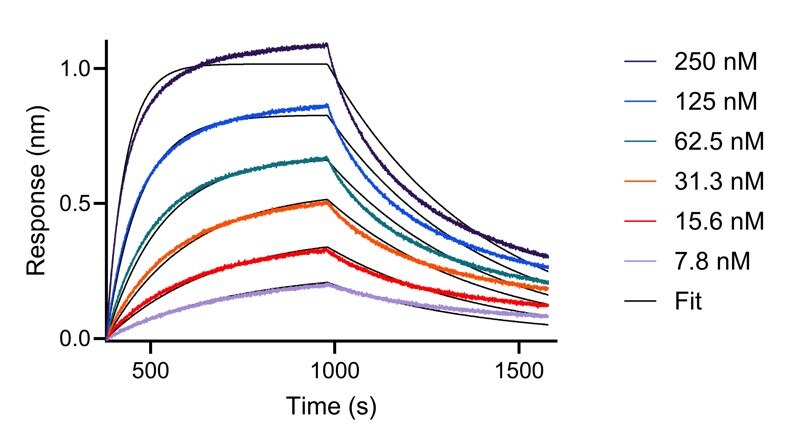Validation Data Gallery
Product Information
CycCys1 is an unconjugated recombinant anti Cystatin-C Nanobody (VHH). Suitable for for cysteine conjugation with thiol-reactive reagents, e.g. maleimides. Note: unconjugated VHHs are not suited for usage without prior labeling, since they contain reactive Cysteines. Shipment and storage buffers contain TCEP to keep Cysteines reduced.
| Applications | Conjugation |
| Reactivity | Human |
| Conjugate | Unconjugated |
| Type | Nanobody |
| Class | Recombinant |
| Host | Alpaca |
| Affinity | 35 nM |
| Molecular Weight | 14.7 kDa |
| Form | Liquid |
| RRID | AB_3665408 |
| Storage Buffer | 10 mM HEPES pH 7.0, 500 mM NaCl, 0.09% sodium azide |
| Storage Condition | Store at -20°C |
| Shipping | dry ice |
| Background | Cystatin C is a 13-kDa inhibitor of cysteine proteinases which is secreted by all cell types and is completely cleared from the organism through glomerular filtration, shown to be an early and sensitive biomarker of renal dysfunction. It is also used as an emerging biomarker in cardiovascular disease. Cystatin C is involved in a variety of inflammatory reactions. The concentration of serum cystatin C has also been shown to be unaltered in certain inflammatory conditions or other disorders of metabolism. The plasma level of serum cystatin C can be expressed as its level of generation from cells and diet and its subsequent elimination through the gut, liver, and kidneys. |

